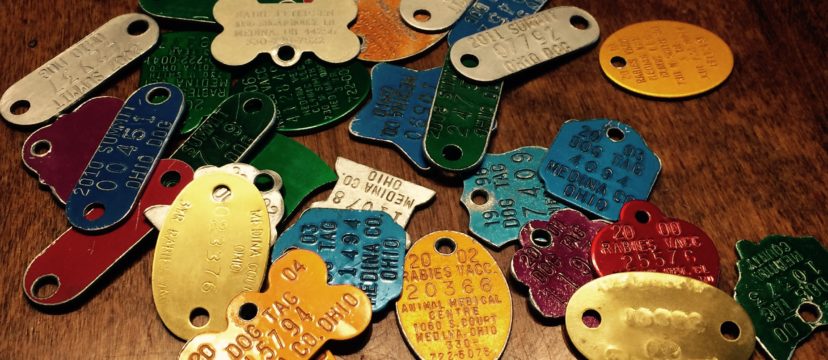
Pictured here are my mother’s dog tags. I can look at the year and know which dog likely wore each shiny medallion. I am saving them as treasures. I am not saving her over-50-piece set of Liberty Falls tiny houses. Which begs the question: why do we save the things we do?
Turn of the 20th century, we owned little, passed down items imbued with family history and sentiment, and we almost seemed better at letting go. Fast forward to the turn of the 21st century. We’ve spent the last 50 years as consumers, many of us with “disposable” income. But we’re not just giving that income to transient experiences. We’re collecting, choosing, saving and even hoarding the things we buy without thinking through their fate.
As an auction house owner, I am gaining insight about the fate of our treasures. I have harsh news. Sometimes the fate is a landfill. There is an undercurrent of nostalgia that drives the aftermarket of saved “stuff,” but there’s an incredible disconnect between those letting go and those taking on these items.
Redundancy
There is the flood of sameness to consider. For example many people over a certain age collected similar items and many remain unwanted by the next generation. There are the Hummels and angels and precious moments figurines; the beanie babies, boyd’s bears or Madam Alexander dolls; it goes on and on.
It can be hard to believe a buyer might want a McDonalds toy from the 70s or an old mineral spirits bottle or your aunt’s cast iron pan instead of things you’ve purposefully saved. There is a clear divorce of sentiment and value. They still know each other well, occasionally come together, but are in no way married.
Volume
Consider that 10.5 Million tons of textiles go to landfills. Things like clothes, rugs, cloth bags, stuffed animals, linens. Only the exceptional are wanted. Or how about the 9.4 million tons of e-waste a year? Your cordless phones and old televisions, printers, and computers are all irrelevant and also unwanted. Most clothes are donated. Linens and towels can sometimes go to dog shelters, but the aged electronics are unsalable and rarely donate-able regardless of condition.
Those might make sense, but would you be surprised to learn about the 9.8 million tons of furniture waste per year? We’ve sold couches for $2. Bedroom sets, full sets, for $25. Given away kitchen tables and chairs. We might blame Ikea, or our large houses, but if you have a storage unit full of furniture, you should know it may not be worth the cost of housing it.
What’s Valuable?
Old does not necessarily signify “value” any longer. Anything before the turn of the 20th century, sure. But the 30s? Not necessarily. It comes down to supply and demand, which feels cold and hurtful when it is applied to your grandfather’s film development equipment.
Styles come and go out of favor. There was an era, we shall call it the TGIF era, where vintage riff raff could be hung on a wall in a kind of cluttered admiration. But that charming 80s era has passed. Ikea has come now and will be a bygone era soon too.
We own so much more now than ever before. So a houseful gets sorted in this… “what’s hot now” way? The 50s? The 20s? The 80s? And unfortunately the answer to those questions can surprise and cut deep. Sometimes, everyone downsizing or passing on in a five year period collected the same things, and then the market floods and the value of their household items plummets.
If this fills you with an icky feeling, know that it does for me too. I hate telling people their things lack market value. But know that the collectors are not to blame, nor the stuff, nor the buyers, or the auctioneer!
Don’t Despair
The takeaway, in my opinion, is to never collect things for their perceived market value alone. Ever. Your jewelry, Swarkovski figures, art and linens and furniture should be bringing you and your family joy and purpose each day. They are gifts of the moment and serve your life here and now. They have no sure future beyond you. You bring the value to your things. The people you love might carry their value on, but it is just as likely that they will not or that they will choose things to treasure that you may have never expected.
